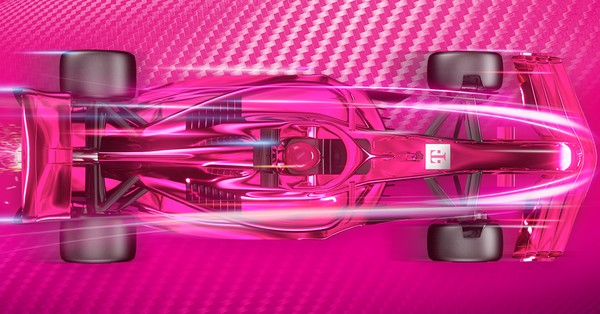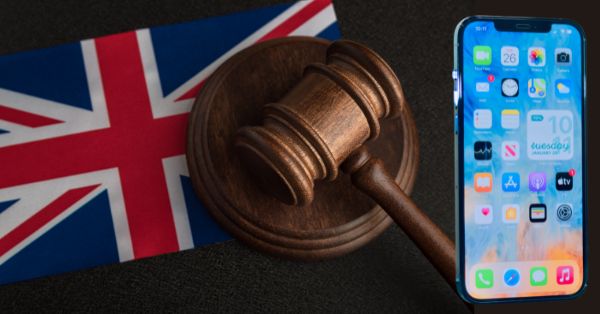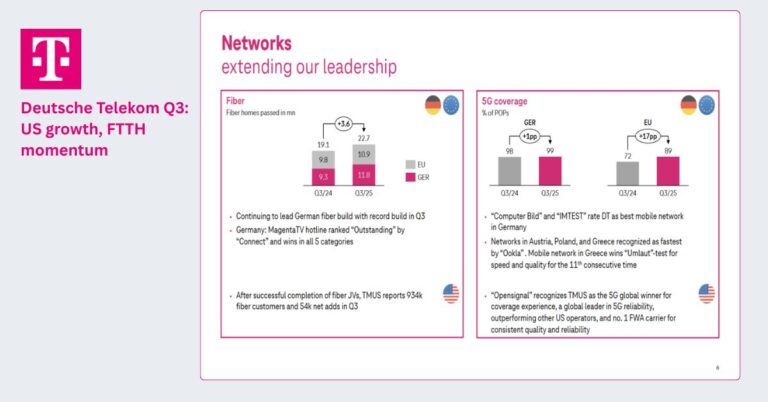In Episode 222 of The G2 on 5G, analysts Will Townsend and Anshel Sag dive into the latest developments shaping the future of wireless technology, including early 6G testing, AI-optimized mid-range phones, explosive IoT growth, and next-gen chipsets. Here’s a breakdown of the highlights.
T-Mobile Begins Testing Potential 6G Equipment
Kicking things off, Will discusses a major development in the journey toward 6G. T-Mobile has begun testing experimental prototype equipment from Nokia, operating in the 7GHz to 8.4GHz spectrum range near its Bellevue, Washington headquarters. While the spectrum isn’t yet cleared for commercial use, its capacity for 10–20x improvements in data rates and reuse of existing base stations makes it ideal for next-gen deployments.
An FCC filing supports this, and Nokia’s own parallel testing further validates the 6G aspirations. Although this spectrum band has propagation challenges similar to millimeter-wave, both Will and Anshel agree that standalone 6G will need new, optimized bands. As Anshel notes, we may be five years away from true 6G, but groundwork like this is essential, especially with discussions around AI-enhanced infrastructure and even terahertz frequencies on the horizon.
Google Launches Pixel 9a – A Mid-Range Contender
Anshel turns the focus to Google’s Pixel 9a, a $499 smartphone that delivers flagship performance at a budget-friendly price. With the same Tensor G4 processor as the high-end Pixel 9, 8GB of RAM, and an OLED display, the Pixel 9a punches well above its weight class.
Despite using an older modem and downgraded cameras, the phone features a larger battery than the flagship model—translating to better battery life. Anshel notes this aligns with the priorities of budget-conscious users. While the 9a lacks some advanced connectivity like satellite messaging, it’s ideal for users new to Android or those seeking top-tier value without the flagship price tag.
Vodafone Connects Its 200 Millionth IoT Device
Will shifts to a milestone from Vodafone, which recently connected its 200 millionth IoT device. As reported by RCR Wireless, Vodafone’s IoT growth has surged with a 50% year-over-year increase in sales over five years. Once considered slow to monetize, the IoT market is accelerating, especially as 5G brings more power and scalability.
Will references a conversation with FloLive, a company focused on IoT orchestration, which supports the idea that 5G is the best platform for industrial and narrowband IoT. With further collaboration expected from Vodafone, including its role in Open RAN, this is a space to watch.
GSA Forms 5G RedCap Special Group
Next up, Anshel highlights the Global Mobile Suppliers Association (GSA) forming a RedCap Special Interest Group, with founding members Ericsson, Huawei, Qualcomm, and MediaTek. This group aims to support development of 5G Reduced Capability (RedCap) technology—a leaner, lower-power version of 5G ideal for IoT, wearables, and industrial applications.
RedCap requires standalone 5G networks, and Anshel notes that it’s a key driver for enabling power-efficient, always-connected devices. He’s already tested RedCap hardware, confirming its ultra-low power usage and envisioning its role in smartwatches, AR glasses, and even Kindles. Collaboration between infrastructure and chipset providers will be key to RedCap’s success.
AT&T and AST SpaceMobile Launch FirstNet Satellite Trials
Will covers late-breaking news: AT&T and AST SpaceMobile have received FCC approval to test direct-to-cell satellite connectivity over FirstNet’s Band 14. FirstNet is a nationwide network for first responders, and this move ensures coverage even in disaster zones where traditional infrastructure fails.
Will sees this as a natural evolution of FirstNet’s mission, especially as AT&T has already used satellite Cells on Light Trucks (COLTs) during past emergencies. Anshel adds that satellite-backed connectivity should become standard for all major networks offering emergency services.
MediaTek Debuts Dimensity 9400+ and Companion Ultra Chips
Anshel dives into MediaTek’s latest silicon launches:
-
Dimensity 9400+: A minor upgrade over the existing Dimensity 9400, offering better AI performance, 33% faster GPS lock times, and tweaked GPU optimizations—ideal for flagship phones, especially in Asia.
-
Companio Ultra: A high-performance chip built for Chromebooks, designed to support Google’s Gemini AI features through ChromeOS Plus. Based on a 3nm process, it delivers 18% faster CPU, 40% better GPU, and 50% lower power than Intel’s Core Ultra 125U, positioning it as a potential AI PC (AIPC) solution.
Anshel predicts wide adoption in high-end Chromebooks and emphasizes that this is Google’s answer to the AI PC movement.
Final Thoughts and Closing
Wrapping up the episode, Will plugs his latest research note on NTT, which now ranks #3 globally in data center services. Anshel, meanwhile, previews a head-to-head baseball clash between their favorite teams, the San Diego Padres and Houston Astros, adding a fun personal note to the podcast’s conclusion.
Episode 222 of The G2 on 5G showcases how the mobile and wireless industry continues to evolve—driven by early 6G activity, affordable AI-capable devices, global IoT expansion, and new chipset innovations. With satellite networks becoming part of emergency response and RedCap enabling smarter wearables, the future of connectivity is not just fast—it’s also everywhere.
Stay tuned every week for the latest in 5G and beyond on The G2 on 5G.











































